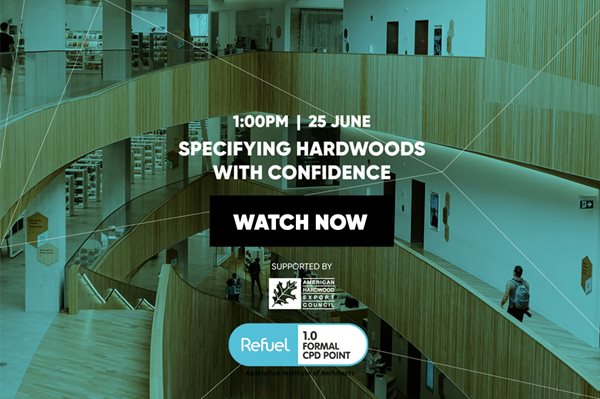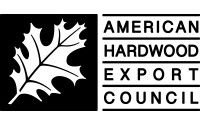Click on the links below to watch CDP-Live program now.

25 June, 9.00am – 10.00am AEST
Session Synopsis:
This CPD is designed to understand the requirements of Section J NCC 2019 and its implications on Window and Door selections. What are the impacts of different products on overall Façade performance and how they can affect building design.
“There has been a lot of uncertainty in regards to the Section J update in NCC 2019, this CPD should allow the attendees to start to feel more confident about designing a Compliant building.” – Ross Baynham, National Specification Manager, Alspec
ALSPEC:
CPD Documents:
Please remember you are required to attend the full hour of the presentation in order to receive your formal CPD Certificate.
Key Learning Outcomes:
From attending this session participants will learn:
- The new requirements for External Facades in NCC 2019
- Understanding the performance of windows and walls
- The impacts of different products on overall facade performance
- The impacts of NCC 2019 on building design


25 June, 10.15 – 11.15am AEST

Session Synopsis:
There are major factors that should be considered with bathroom drainage, building compliance and building insurance with WaterMark Certification – Troy explains the implications and also details all of the drainage considerations you should consider in your projects.
“On the 1st of June 2020, the ABCB released an update to the 2018 version of WaterMark Technical Specification WMTS-040:2020. This is one of the most significant changes to the specification in recent years – we’ll cover what materials are certified now and what are not” – Troy Creighton, Managing Director, StormtechKey
Stormtech
CPD Documents:
Please remember you are required to attend the full hour of the presentation in order to receive your formal CPD Certificate.
Please remember you are required to attend the full hour of the presentation in order to receive your formal CPD Certificate.
Learning Outcomes:
From attending this session participants will learn about drainage considerations including:
- Code requirements
- Practicalities
- Problems
- Design solutions
- Environmental aspects


25 June, 11.30am – 12.30pm AEST
Session Synopsis:
How does Wellness & Health impact our working & living lives? With many new buildings under construction, how many of these can be described or certified healthy? Do we know how healthy buildings can lead to positive impacts on both immediate environments both internal and external? If so what are the implications? We need to understand how working spaces will be used and how connected they are to the natural & built environments. Can biophilic design achieve wellness and positive built environment outcomes? Can we achieve a sweet spot of living and working with increased health and wellness? How does timber and the use of timber in built environments achieve these positive outcomes? Are there existing examples of these to educate current design intents? How does the modern and post-COVID design paradigms allow us to eliminate a dichotomy of health & wellness with built environments?
“We’ve already had the privilege of working with world class architects and designers across Australia and have found them to be both interesting and interested in the information and experience we have. We’re looking forward to sharing some of the background to what makes American hardwood species different, their suitability for applications and the latest technical developments from around the world that will provide architects with all they need to make an informed choice when specifying timber in their projects” – Rod Wiles, Director, American Hardwood Export Council Oceania.
Havwoods:
CPD Documents:
Please remember you are required to attend the full hour of the presentation in order to receive your formal CPD Certificate.
Key Learning Outcomes:
- Understand what wellbeing is and why it matters
- Understand what is meant by ‘Healthy Buildings’ and ‘Healthy Materials’
- Explore the connection between wood and wellbeing
- Look to the future of wood & wellbeing



25 June, 1.00pm – 2.00pm AEST

Session Synopsis:
The aim of this presentation is to give architects and designers an understanding of where American hardwoods come from, what they are, what their environmental credentials and impact are and how to use them and specify them realistically.
After a brief introduction to the American Hardwood Export Council (AHEC) and its non-commercial role in improving understanding of American hardwoods worldwide, the presentation is split in to three distinct parts, as follows:
Part one focuses on provenance, legality and sustainability, looking hardwood resource management in the United States and its practice today. It covers the size and spread of the resource and its ownership and how this determines harvesting and production. It provides an overview of the American Hardwood Environmental Profile (AHEP) and how this looks at proof of legality, sustainability and the low environmental impact of kiln-dried hardwood lumber and veneer through cradle-to-gate Life Cycle Assessment (LCA).
Part two provides a brief overview of production, looking at sawmilling and kiln-drying and then focuses on the key American hardwood species in terms of commercial availability, their physical attributes and their potential for applications, demonstrated through real life projects from around the world.
Part three covers two recent developments in timber technology, which can be applied to U.S. hardwoods – namely thermal modification (TMT) and cross-laminated timber (CLT). It looks at the species and processes involved in these technologies and how the material can be applied in construction, along with some of its benefits.
In essence, this presentation is designed to provide the listener with enough of a degree of knowledge and confidence in order to make an informed choice when specifying American hardwoods.
AHEC:
CPD Documents:
Please remember you are required to attend the full hour of the presentation in order to receive your formal CPD Certificate.
Key Learning Outcomes:
- Assess and integrate construction systems and materials consistent with the project brief
- Evaluate design options against values of physical, environmental and cultural contexts
- Apply creative imagination and aesthetic judgement to produce coherent design
- Investigate and integrate appropriate material selection for the project design


25 June, 2.15 – 3.15pm AEST
This CPD is intended to provide Designers with a comprehensive overview of the areas that effect the specification of plumbed in boiling and chilled drinking water appliances in the workplace.
This CPD seminar will focus on four key areas: Client Needs, Product Selection & types, Water Filtration, Installation
Zip:
CPD Documents:
Please remember you are required to attend the full hour of the presentation in order to receive your formal CPD Certificate.
Key Learning Outcomes:
Select efficient products meeting the requirements of the WHS Act (Design 4.1)
Explain how water filters work and describe their attributes (Design 4.6)
Apply the energy efficiency principles as required by the National Construction Code (Documentation 5.3)
Recognise the plumbing requirements of Australian Standards for installation (Documentation 5.3)



